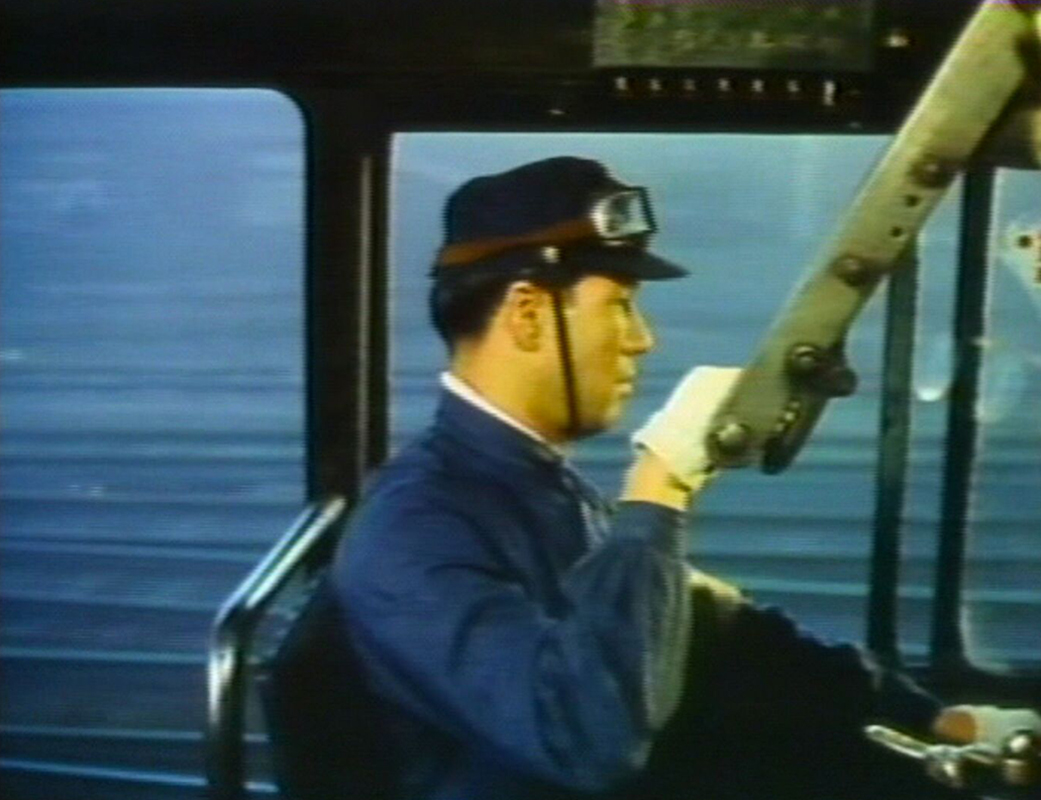Aru kikanjoshi (An Engineer’s Assistant)

In 1962, the Japanese National Railways (JNR) imposed intensified labour schedules as a response to the congestion of the railways due to the transport of materials and the deployment of the Shinkansen fast train in preparation for the 1964 Olympic Games. In May of that same year, a train crash killed 160 people. In order to wipe away the bad impression caused by this accident, the JNR commissioned this film. Shot with great craft and skill, the film shows the extraordinary hard work these men were doing to keep the trains running on time.
“The subject of this film was the promotion of a new device to avoid accidents. However, I had seen that the true cause of the accident was a congested service schedule, and I consciously placed emphasis on the depiction of the actual work of the engineer and his assistant, and of those who had chosen the route and were responsible for safety on the line on which the accident took place. As director I went over to the JNR Workers’ Union, which had officially taken the blame, and I earned their understanding and cooperation for a story analytically depicting their work." — Tsuchimoto Noriaki
Japanese spoken with English subtitles
Dokyument rojo (On the Road: A Document)

On the Road
On the Road: A Document was originally commissioned by the traffic division of Japan’s police administration. Tsuchimoto used this opportunity to collaborate with the drivers’ unions. An exquisite city symphony centered on a taxi driver and his family, this is ultimately an intimate portrait of the people, traffic, and sounds of Tokyo. The film turned out to be one of the great documentaries made about of this rapidly shifting society. In its dynamic attention to detail and sound, the film was not what the sponsors anticipated, and it was never publicly released.
“Suzuki Satsuo’s skilfully manipulated hand-held camera with a long lens is meticulous, at times sentimental, at times bold, focusing on his subject in a way that seems as though it were composing a melody with images. On the Road showed us a new, powerful type of image. The images themselves, rather than any voice-over narration, speak to us directly, showing us a rich, fertile work.” — Shinomiya Tetsuo
Japanese spoken with English subtitles